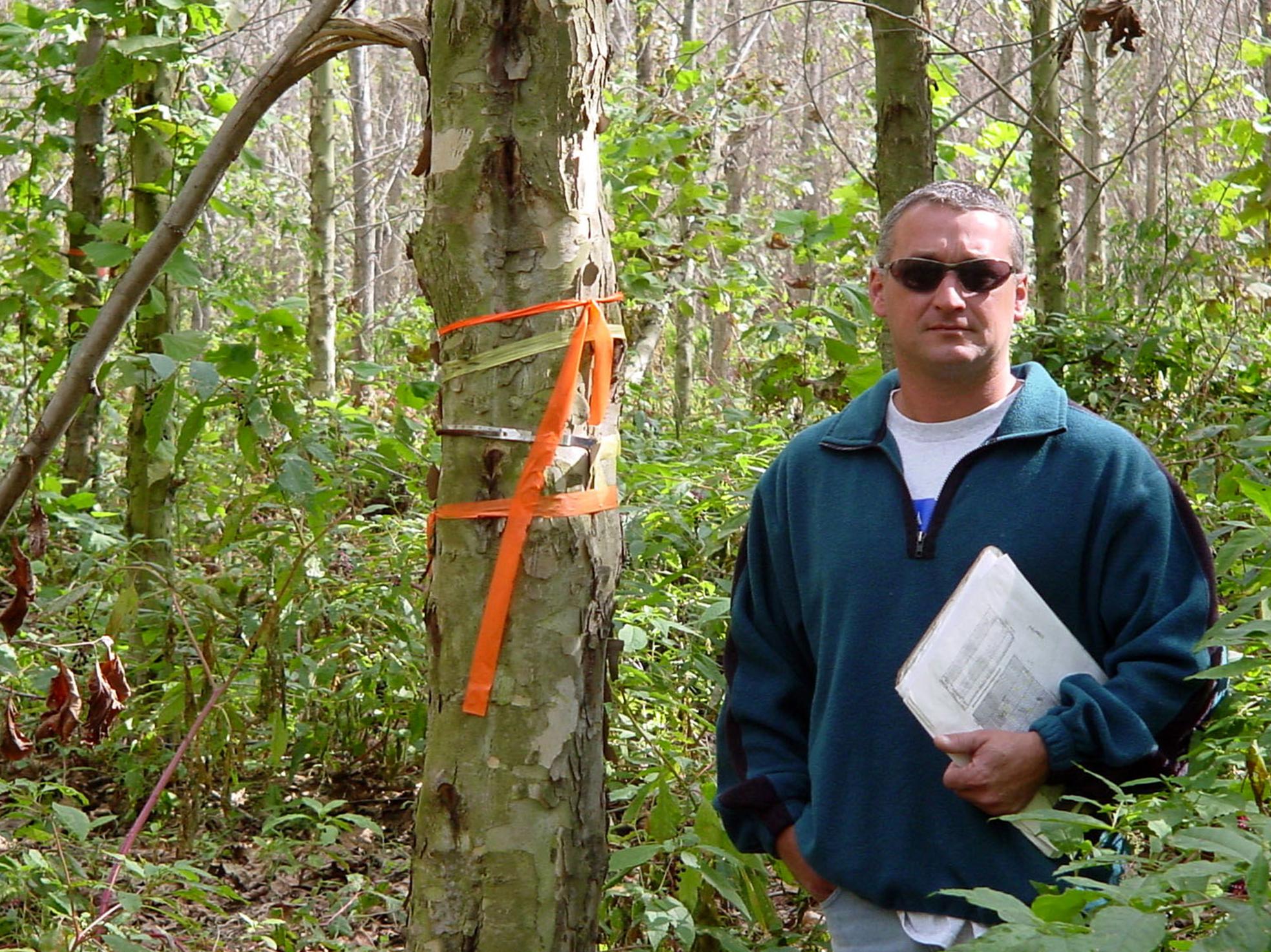Information Possibly Outdated
The information presented on this page was originally released on March 22, 2019. It may not be outdated, but please search our site for more current information. If you plan to quote or reference this information in a publication, please check with the Extension specialist or author before proceeding.
Studies offer future hope for American sycamores
STARKVILLE, Miss. -- American sycamores can grow to be large and stately with mottled bark of white and green and huge, shallow-lobed leaves. Their wood has a number of uses, including furniture, boxes, crates, paper and butcher blocks (because of its hardness). Sycamores are also widely used as ornamental trees throughout the East, South and Midwest.
Unfortunately, the American sycamore has been limited in use due to an aggressive disease known as bacterial leaf scorch, which was identified in 2004. It has been shown to be the initial disease that places the trees under stress, thus paving the way for various, less aggressive fungal diseases that are more lethal.
The signs of bacterial leaf scorch are similar to drought effects; leaves start turning brown in the crown and possibly throughout the tree. If this problem is accompanied by dieback in the tree top, the tree has definitely lost the battle and will succumb to the disease.
However, this is not a case of another species going extinct. Researchers have examined the cause of the disease and discovered that a small insect is its primary vector. They also found that any type of wound, such as the breakage of branches due to storms and high winds, may allow this aggressive disease to take hold.
Researchers wanted to know whether certain sycamore trees have the ability to avoid infestation. American sycamore has an extremely large range, which gives it a great deal of genetic variability. The search began by identifying parents that show resistance to bacterial leaf scorch.
Researchers used a few of these resistant trees in a breeding trial. When the resistant trees were crossed with other resistant trees, the resulting seedlings grew without much effect from the disease. When a susceptible tree was crossed with either a resistant or susceptible tree, the resulting seedlings developed the disease and many died. With this knowledge, researchers began collecting a wider array of resistant sycamores.
Another interesting aspect was found in a study at the University of Mississippi, where the pharmaceutical department examined native plants for various uses other than typical medicine. They used sycamore leaves and branches to produce a specific compound and test its effectiveness on staph infections. The results showed that sycamore does indeed produce a compound that will work effectively on drug-resistant staph. Interestingly, the sycamores that produced a higher rate of this compound also showed resistance to bacterial leaf scorch.
Currently, the U.S. Department of Agriculture Forest Service and Mississippi State University are collecting sycamore parents resistant to bacterial leaf scorch and breeding them to produce seedlings that show even higher rates of resistance.
The search for a cure to bacterial leaf scorch has led to the development of sycamore trees that are not only resistant but may also benefit human medicine as a means of fighting drug-resistant staph infections.

Editor’s Note: Extension Outdoors is a column authored by several different experts in the Mississippi State University Extension Service.



